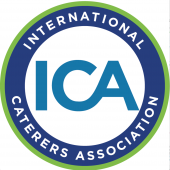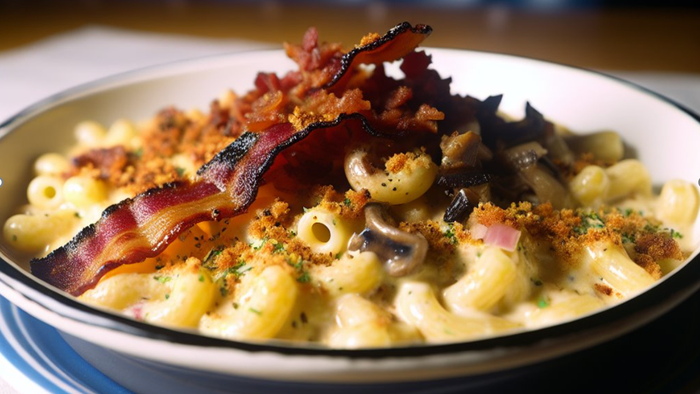New Year, New Budget: How to Budget Effectively for Catering Business Growth in 2022New Year, New Budget: How to Budget Effectively for Catering Business Growth in 2022
New Year, New Budget: How to Budget Effectively for Catering Business Growth in 2022
January 25, 2022

Ah, budgeting. It’s a necessary evil for every business in this world. And while many creative caterers don’t love the numbers side of things, having an accurate and thorough budget is often the key to success and growth. So, during this month’s International Caterers Association Roundtable Discussion, Francisco Christian, managing partner of Taylored Hospitality Solutions, led a conversation surrounding how caterers can effectively build, monitor and make the most of their 2022 budgets.

Step 1: Consider the State of the Catering Business in 2022
When building a budget in this day and age, it’s important to take a look at contributing factors that are impacting the industry. From inflation to supply chain issues, there are many considerations you must make as a catering business leader to ensure that your sales pipeline is primed to cover the expenses you’ll accrue doing business.
You must then pair global industry realities with current industry trends. The reality of our COVID-era events world is that we’re experiencing many more small events, with large events still few and far between in many cases. There are more social soirees and weddings than conventions or conferences. And while event regulations are still ever-changing and vary state to state, there is a desire to gather again that is going to be feeding that pipeline, albeit a bit slower than historically.
So, how do you use these facts as guiding principles for your budgeting? Christian covered the top statistics for you to consider:
We will continue to be affected by the supply chain and labor shortage for the first half of the year.
Inflation will still be around 3% in 2022, whereas the rise in 2021 was 5.3%.
Consumer spending is anticipated to grow 4.7%—which is good news.
Pay hikes will increase by 3.5%; overall for 2021, the rise was 4%. Wage gains will be the highest in construction, travel, retail and food services—so it’s important for us to pay attention to this!
Gas and diesel will continue to be 5-10% higher than 2021—we’ll see this in food delivery costs as well as inflation for off-premise caterers.
Electricity will continue to carry a 5% increase.
Container costs will see a decrease of 5-10%, which understandably is not much with the high rates. You can expect ocean freight to slowly fall as the existing ships are unloaded; however, chassis and container shortages will linger.
Step 2: Review Sales Forecasts to Build Your Budget Development Foundation
Your next step to creating your budget is to look at your sales forecasts and your pipeline to predict what you’ll see coming in this year. On average, most catering companies are predicting 50-60% of 2019 revenues. So, if you’re not sure where you are land, this is a good statistic to consider based upon other ICA member predictions!
Step 3: Incorporate Direct Costs & Overhead Expenses
Next up for building is costs. These are the direct costs and overhead expenses you want to factor in, as well as watch closely throughout the year. Plus, pay attention to the anticipated markup you should use to guide figures based upon industry and global inflation.
Direct Costs
Warehouse Labor - Hourly Employees (1–5% markup)
Kitchen Labor - Hourly Employees (12–20% markup)
Event Labor - Hourly Employees (50% markup)
Food Cost (18–25% markup)
Soft Beverage Cost (50% markup)
Liquor Cost (35% markup)
Disposables Cost (1–3% markup)
Vendor Costs (35% markup)
Venues and Third-Party Commissions (10–15% markup)
Service Charge (50–100% markup)
Payroll Taxes - Hourly Employees
Workers Compensation - Hourly Employees
Overhead Expenses
Rent (10% markup)
Sales Expenses (1–2% markup)
Meals and Entertainment
Transportation
Travel
Education
Dues and Subscriptions
Client Gifts
Marketing Labor and Expenses (1–3% markup)
Outsourced Services
Advertising and Promotions
Open House
Sponsorship
Print Media and Social Media
Salaries (30–40% markup)
Sales
Administrative
Executive Chef
Operations Director
Finance/Accounting
IT
Employee Health
Utilities/Telephone/Data Processing
Building Maintenance
Equipment Maintenance
Vehicle Maintenance
Gas and Mileage
Human Resources and Training
Uniforms
Audit and Legal
Property Taxes
Bank Charges
Interest Income and Expense
Depreciation
This is a lot to consider when the world is so fluid. Right now, the traditional annual budget process has been replaced with a cash-is-king mentality. Due to unreliable supply chains and other pandemic-related service disruptions, you can’t be afraid to charge what’s necessary to cover your increased expenses. If this feels overwhelming, invest in resources like this book by Christian outlining all the ins and outs of budgeting to help you become an expert that’s able to budget for success.
Step 4: Use Your Budget as a Guide to Doing Business in 2022
So, now that you have your budget outlined, how do you implement it to ensure it provides that ROI you’re working towards?
The Catersource Conference & Tradeshow, co-located with The Special Event, is heading to Anaheim May 2 – 5, 2022. With fresh keynotes, new networking opportunities, eye-popping showcasing events and never-before-seen industry speakers, prepare to be wowed. Learn more
The first step is transparency. You can:
Set up initial budgeting meetings with each department head to review in-depth the numbers for spending, as well as the expected ROI, so they can operate their departments accordingly.
Have bi-weekly budget reporting meetings to review direct costs, payroll expenses, sales numbers and up-to-date P&L statements to track progress. This way, everyone has a clear understanding of where the business is at and what needs to be done to achieve budget and business goals. In these meetings you can cover things like:
Food cost vs. food revenue
Beverage cost vs. beverage revenues
F&B cost vs. total F&B revenue
Event labor cost vs. event staff revenue
Warehouse/operations cost vs. total revenue
In-house costs (food, beverage, staff) vs. total revenue
third party/vendor revenue vs. misc. revenue
Delivery/setup costs vs. delivery/setup revenue
Admin fees vs. commissions staff cost and service charge vs. staff revenue and service charge revenue
In doing this and consistently updating, reviewing, and collaborating, your team will pave the way to a profitable year-end!
Want to Discuss Catering Budgets with Like-Minded Professionals?
Being an entrepreneur in the catering space is a tough business. But it’s also incredibly rewarding. For that reason, it’s good to build a network of like-minded professionals who understand firsthand the day-to-day struggles, challenges and wins. Through a live Facebook forum, monthly educational roundtables, member events and more, the ICA aims to connect catering professionals across the globe to collaborate and share in success. For more information on how to join the ICA and to be notified of future catering industry webinars, events and education opportunities, visit internationalcaterers.org.







